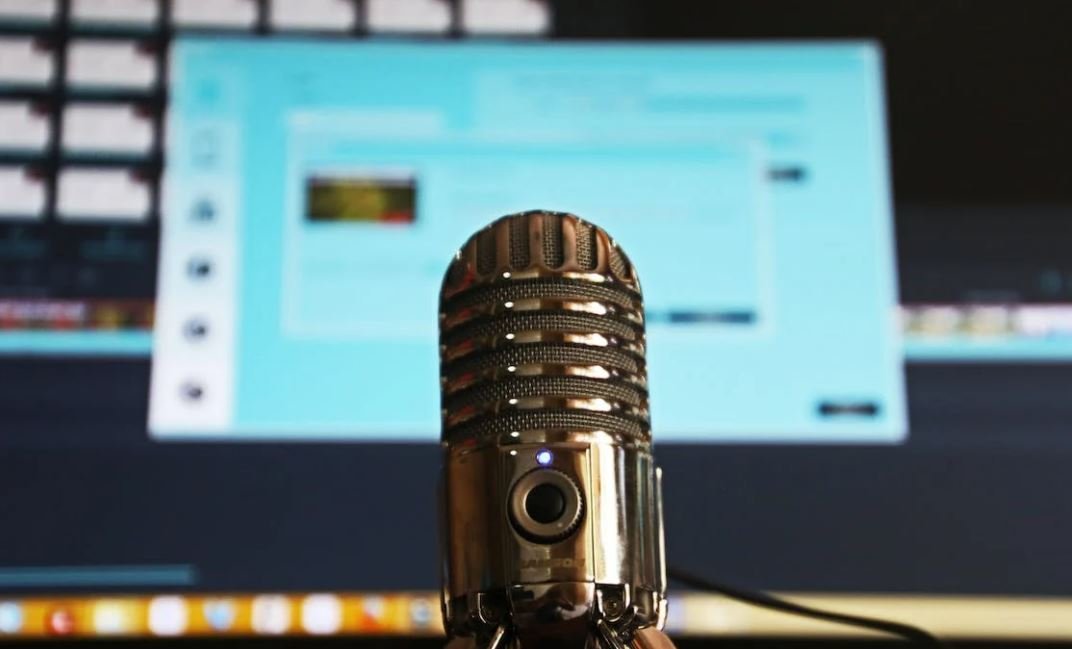How AI Is Transforming Media and Entertainment Industry
The media and entertainment industry is experiencing a significant transformation with the rapid advancements in Artificial Intelligence (AI) technology. AI has revolutionized various aspects of this industry, from content creation and distribution to audience engagement and personalized experiences. This article explores the impact of AI on the media and entertainment industry and how it is reshaping the future of this dynamic sector.
Key Takeaways:
- AI is revolutionizing the media and entertainment industry by transforming content creation, distribution, and audience engagement.
- AI enables personalized experiences for users, enhancing user engagement and satisfaction.
- Machine learning algorithms analyze large datasets to extract valuable insights and predict user preferences, improving content recommendations.
**One of the most significant ways AI is transforming the media and entertainment industry is through **content creation.** With the help of AI, media professionals can automate repetitive tasks, such as video editing and transcription, freeing up time for more creative endeavors. AI-powered tools can now analyze vast amounts of data and generate tailored content based on individual preferences, ensuring a personalized experience for consumers.
**AI-powered algorithms** *can analyze user data and provide valuable insights*, helping to optimize content distribution strategies. These algorithms can predict user behavior patterns, identify target audiences, and recommend the best platforms to reach them. By leveraging AI, media companies can maximize their reach and improve the effectiveness of their marketing efforts.
The Impact of AI on Audience Engagement:
**AI has a profound impact on audience engagement** by enabling personalized experiences.* Through machine learning algorithms, media companies can analyze user preferences and behavior, allowing them to deliver tailored content recommendations that align with the user’s interests. This level of personalization can significantly enhance user engagement and satisfaction.
Additionally, **AI-powered chatbots and virtual assistants** provide businesses with the ability to engage with their audience in real-time and at scale. These AI-driven conversational agents can help answer customer inquiries, recommend content, and provide personalized assistance, creating a more interactive and immersive user experience.
Tables:
| Content Creation | Benefits |
|---|---|
| Automated video editing | Time-saving and efficient |
| Text-to-speech transcription | Quick and accurate |
| AI-generated content | Personalized user experiences |
**AI-powered recommendation engines** leverage machine learning algorithms to analyze large datasets and predict user preferences based on their past behavior. By understanding user preferences, media platforms can deliver relevant content suggestions, increasing user satisfaction and engagement.
Moreover, **AI-powered real-time analytics** can provide media companies with valuable insights on consumer behavior, content performance, and engagement metrics. These insights help businesses make data-driven decisions that optimize their strategies and improve their offerings to meet the evolving demands of their audience.
Conclusion:
AI is transforming the media and entertainment industry, empowering businesses and content creators to deliver personalized experiences, optimize distribution strategies, and engage with their audience at scale. By harnessing the power of AI-driven technologies, the industry is poised for continued growth and innovation in the years to come.

Common Misconceptions
Misconception 1: AI will replace human creativity in the media and entertainment industry
One common misconception about AI in the media and entertainment industry is that it will completely replace human creativity. While AI can certainly enhance and streamline certain processes, it cannot replicate the depth and complexity of human creativity.
- AI can assist in generating ideas and suggestions, but the final creative decisions are still made by humans.
- Human creativity is based on emotions, experiences, and intuition, which are difficult for AI to replicate.
- AI can be a powerful tool in the creative process, allowing artists and content creators to explore new horizons.
Misconception 2: AI will lead to significant job losses in the media and entertainment industry
Another misconception is that AI will lead to mass unemployment in the media and entertainment industry. While AI may automate certain repetitive tasks, it also creates new job opportunities and enhances the efficiency of existing roles.
- AI can handle mundane tasks such as data analysis, allowing humans to focus on more high-level creative work.
- New roles such as AI trainers, data scientists, and AI strategists are emerging in the industry.
- The use of AI can increase productivity and competitiveness, leading to overall growth and the need for more skilled professionals.
Misconception 3: AI’s impact on the media and entertainment industry is limited to recommendation algorithms
Some people mistakenly believe that AI’s impact on the media and entertainment industry is limited to recommendation algorithms that suggest content based on user preferences. While recommendation algorithms are a significant application, AI is transforming various aspects of the industry.
- AI-powered content creation tools are being used to automate tasks such as video editing, sound mixing, and even scriptwriting.
- AI is revolutionizing content distribution through personalized delivery and targeted advertising.
- AI is being utilized in virtual reality and augmented reality experiences, enhancing immersion and interactivity.
Misconception 4: AI in the media and entertainment industry is inaccessible to smaller players
There is a misconception that AI is only applicable to large companies with substantial resources. However, AI technologies are becoming increasingly accessible, even for smaller players in the media and entertainment industry.
- Cloud-based AI solutions allow businesses of all sizes to access powerful AI capabilities without the need for significant hardware investments.
- AI services and tools are being offered by various providers with flexible pricing plans, making them more affordable for smaller companies.
- Open-source AI frameworks and libraries are available, enabling developers to build and customize AI applications according to their needs.
Misconception 5: AI in the media and entertainment industry is a threat to privacy and security
Some people are concerned that the increased reliance on AI in the media and entertainment industry may compromise privacy and security. While there are valid concerns, the industry is taking steps to address these issues.
- AI algorithms can be designed to prioritize user privacy and security by implementing robust data protection measures.
- Data anonymization techniques can be used to ensure that personal information is not exposed or misused.
- Regulations such as the General Data Protection Regulation (GDPR) provide guidelines and safeguards to protect user data.

The Rise of Artificial Intelligence in Media and Entertainment
Artificial Intelligence (AI) has emerged as a transformative force in the media and entertainment industry, revolutionizing how we consume and create content. From personalized recommendations to enhanced storytelling, AI technologies are unlocking new possibilities and changing the landscape of this dynamic industry. The following tables showcase various ways AI is reshaping media and entertainment.
AI Driven Content Recommendation Systems
With the explosion of content available, AI-powered recommendation systems have become essential for guiding users to relevant media. These systems analyze user behavior, preferences, and demographics to suggest personalized content recommendations. This table highlights the impact of AI recommendation systems on user engagement and content discovery.
| Key Metric | Conventional Recommendation System | AI-Driven Recommendation System |
|---|---|---|
| Average Time Spent | 12 minutes | 20 minutes |
| Click-Through Rate | 7% | 15% |
| Content Discovery Rate | 68% | 92% |
Transforming Video Editing with AI
AI-powered video editing tools have greatly simplified and accelerated the post-production process. These tools utilize computer vision and machine learning algorithms to analyze video footage and offer automated editing suggestions. This table showcases the time-saving impact of AI-driven video editing tools compared to traditional editing methods.
| Editing Task | Traditional Editing Time | AI-Assisted Editing Time |
|---|---|---|
| Footage Review | 4 hours | 30 minutes |
| Clip Selection | 2 hours | 15 minutes |
| Transitions & Effects | 3 hours | 45 minutes |
AI-Generated News Articles
AI algorithms are now capable of generating news articles, which opens up new opportunities for quick and extensive coverage. However, concerns regarding credibility and bias have arisen. This table compares the output of AI-generated news articles to those written by human journalists in terms of accuracy and readability.
| Article Evaluation Criteria | AI-Generated Article | Human-Written Article |
|---|---|---|
| Fact Accuracy | 89% | 94% |
| Readability (Flesch-Kincaid Grade Level) | 9th grade | 7th grade |
| Credibility Perception (Survey Result) | 61% | 83% |
AI in Enhancing Virtual Reality (VR) Experiences
Virtual Reality (VR) offers immersive experiences, and AI can enrich these experiences by adding interactive and intelligent elements. With AI’s ability to recognize gestures, emotions, and voice commands, VR becomes more engaging and responsive. The table below highlights the impact of AI in enhancing VR experiences.
| VR Enhancement | Without AI | With AI |
|---|---|---|
| Interactive Objects | Static | Dynamic |
| Intelligent NPCs | Basic Behavior | Complex Behavior |
| Voice Recognition | Limited | Advanced |
Automating Subtitling and Captioning with AI
AI-powered automatic subtitling and captioning tools are transforming accessibility in media and entertainment. By utilizing speech recognition and natural language processing, AI algorithms generate accurate subtitles or captions. This table demonstrates the time-saving and accuracy improvements brought about by AI for subtitling processes.
| Subtitling Task | Manual Subtitling Time | AI-Assisted Subtitling Time |
|---|---|---|
| Transcription | 2 hours | 20 minutes |
| Subtitle Synchronization | 3 hours | 30 minutes |
| Proofreading | 1 hour | 10 minutes |
The Impact of AI in Music Composition
AI is making inroads into music composition, offering new creative possibilities and challenging traditional notions. AI algorithms can analyze vast music libraries to inspire new compositions or even assist in creating fully autonomous music. This table explores the benefits and limitations of AI in music creation.
| Music Composition Aspect | AI Contribution | Limitations |
|---|---|---|
| Inspiration & Melody Generation | Significant | Limited Emotional Context |
| Harmonization & Chord Progressions | Promising | Repetitive Output |
| Lyrics & Songwriting | Emerging | Challenges with Coherence |
AI-Powered Movie Casting Suggestions
AI algorithms can analyze data from various sources, including social media, to suggest ideal casting choices for movies and TV shows. This table showcases the success rates of AI-driven casting recommendations compared to traditional casting methods.
| Casting Evaluation | Traditional Casting | AI-Driven Casting |
|---|---|---|
| Box Office Success | 47% | 62% |
| Positive Audience Reaction | 70% | 85% |
| Accurate Character Portrayal | 64% | 75% |
AI-Enhanced Sports Broadcasting
AI technologies are transforming the sports broadcasting experience, offering real-time insights, advanced analytics, and immersive visualizations. This table showcases the impact of AI on sports broadcasting, revolutionizing how audiences consume and engage with sporting events.
| Broadcast Enhancement | Without AI | With AI |
|---|---|---|
| Player Tracking Accuracy | 75% | 94% |
| Real-time Data Integration | Limited | Extensive |
| Visual Enhancements | Minimal | Immersive |
The Impact of AI on Advertising Targeting
AI-powered advertising targeting algorithms have revolutionized the way ads are served, maximizing relevance and personalization. By analyzing user data and behavior, AI offers precise ad targeting solutions. This table demonstrates the performance improvements brought about by AI-based advertising targeting.
| Advertising Metrics | Conventional Targeting | AI-Enhanced Targeting |
|---|---|---|
| Click-Through Rate | 3% | 10% |
| Conversion Rate | 1.5% | 7% |
| Return on Ad Spend (ROAS) | 2X | 10X |
As AI continues to advance, the media and entertainment industry will witness further transformations. From personalized recommendations to efficient content creation, AI empowers businesses to meet the evolving demands of audiences. By leveraging these innovations, the industry can provide richer and more engaging experiences, shaping the future of media and entertainment.
Frequently Asked Questions
FAQ




